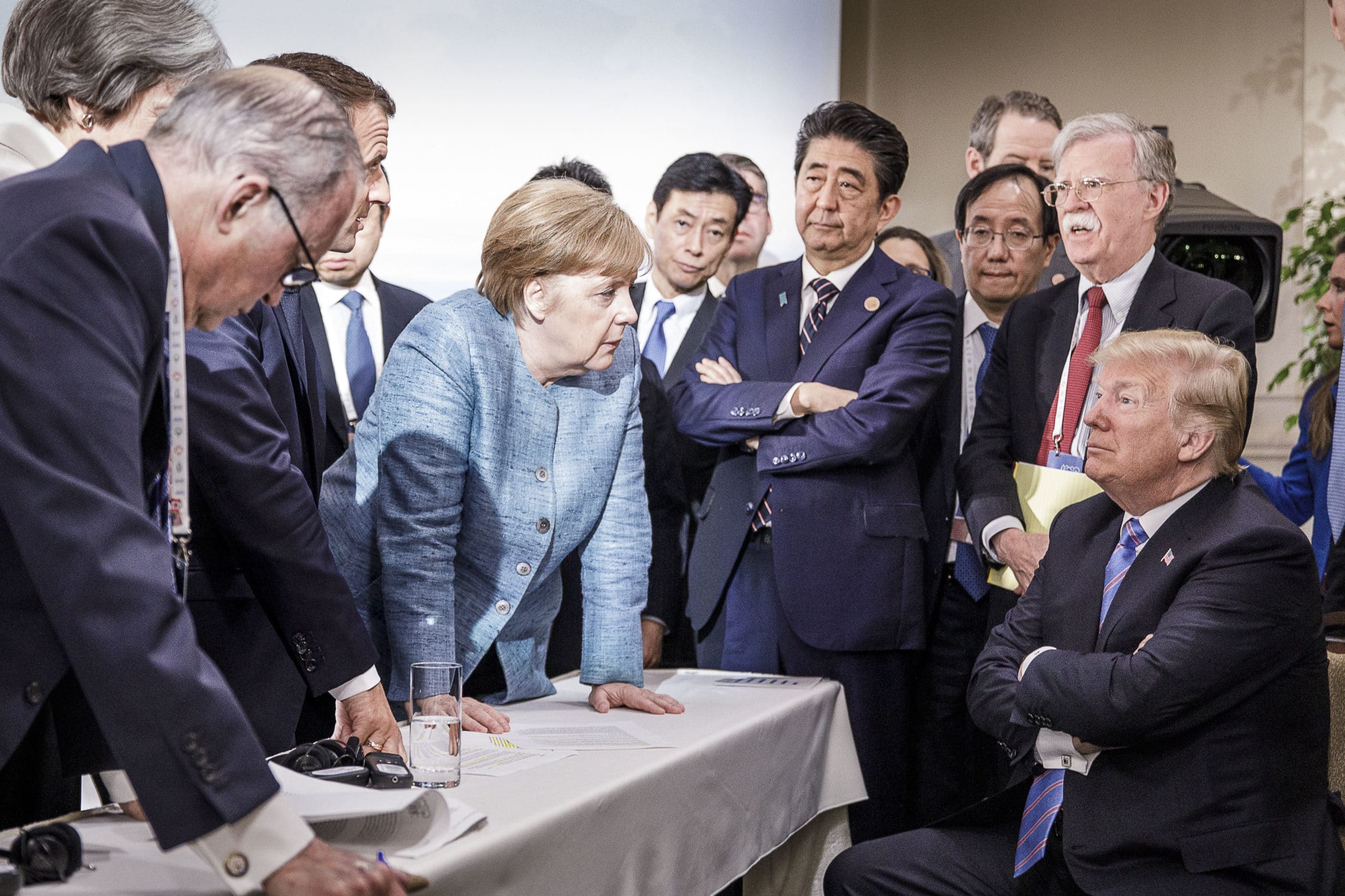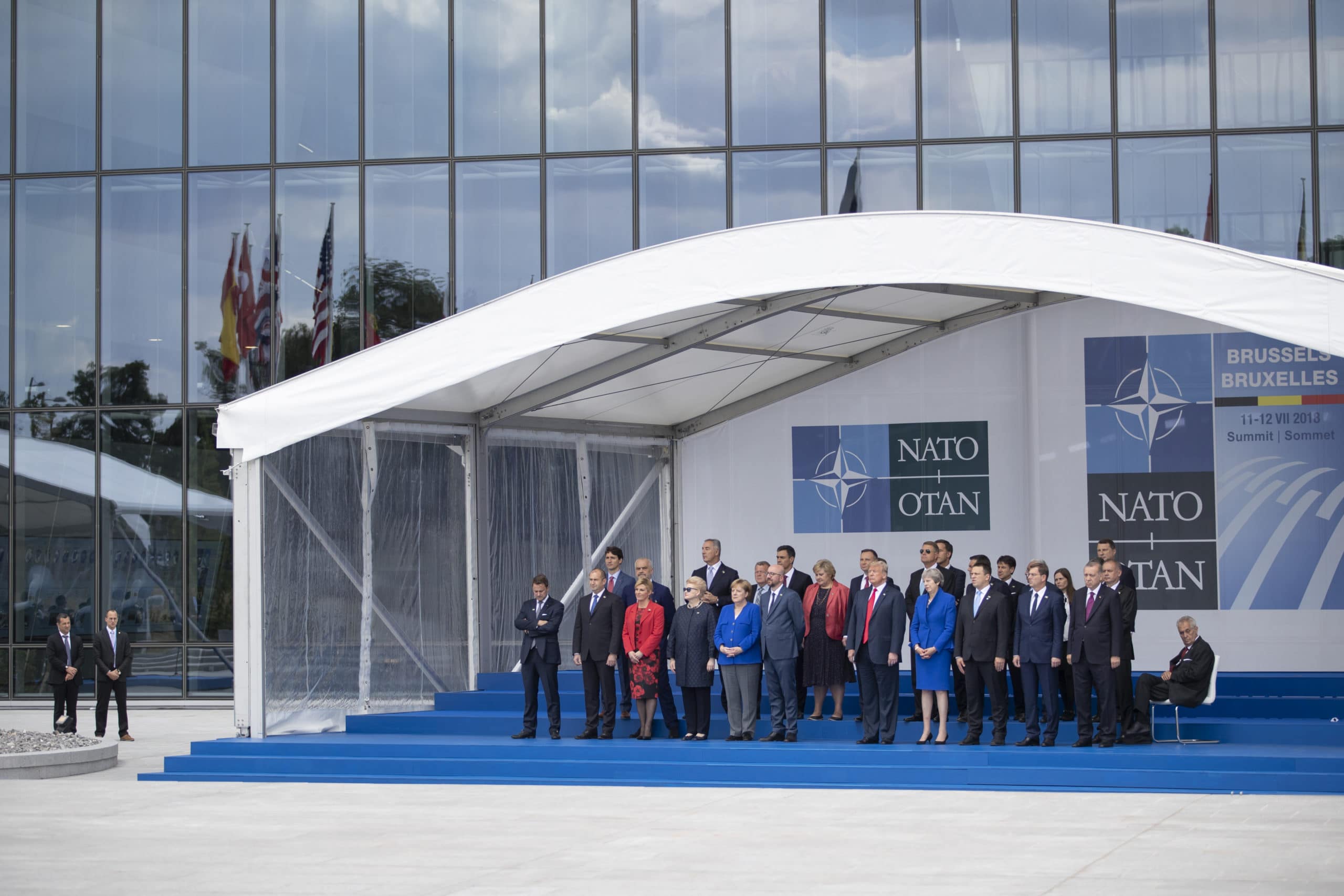January 14, 2021 | From Trump to Biden Monograph
Europe
January 14, 2021 | From Trump to Biden Monograph
Europe
Current Policy
President Trump’s scant regard for the multilateral institutions that underwrote European security after World War II placed immense strain on the transatlantic relationship. The state of NATO, deterrence against Russia, U.S.-UK relations, and even freedom of movement between the United States and Europe have undergone unprecedented challenges under Trump.
Trump often engaged in harsh criticisms of his European counterparts and raised complex issues in terms that made reasoned discussion among allies difficult. Most notably, he continually charged not just that key European NATO members were “free-riding” on U.S. defense expenditures (a long-time U.S. complaint), but that they were somehow delinquent on “dues” to NATO, which do not actually exist. Trump even characterized his plan to cut U.S. troops in Germany from 40,000 to 25,000 as punishment for Germany’s alleged failure to pay.1
Absent U.S. leadership, Libya also became a source of significant tension in Europe, with France and Turkey supporting opposite sides in the conflict.2 The administration’s passive stance left NATO members at odds with one another and has largely benefitted Turkey’s authoritarian President Recep Tayyip Erdogan as well as Russian President Vladimir Putin. However, the Trump administration did belatedly impose sanctions on Turkey for its purchase of the Russian S-400 air and missile defense system.3

German Chancellor Angela Merkel deliberates with President Trump on the sidelines of the June 2018 G7 summit in Charlevoix, Canada.
(Photo by Jesco Denzel/Bundesregierung via Getty Images)
Trump disparaged Montenegro’s membership in NATO, nursed grievances against Ukraine for its alleged involvement in the 2016 election, and failed to provide rhetorical support for Georgia despite intensified Russian backing for the breakaway regions of Abkhazia and South Ossetia.4 In Belarus, Trump opted for silence as protesters contested the fraudulent re-election of Alexander Lukashenko, who requested Russian assistance in putting down popular protests.
Trump offered vocal support for the withdrawal of the United Kingdom from the European Union. As Britain limped to its formal withdrawal from the European Union on January 31, 2020, Trump did not shy away from cheering on the divorce. Although he hinted at Washington’s political and economic support for the United Kingdom in the aftermath of its withdrawal, Trump did not follow through with any concrete plan for a free trade agreement and closer relations with the United Kingdom.5
One area where Trump’s European diplomacy was more active was the Serbia-Kosovo dispute, in which the administration repackaged efforts already underway and tied them to its broader push to prompt Muslim-majority countries to establish diplomatic ties with Israel.
Regarding Europe’s energy sector, the administration, with widespread bipartisan congressional support, attempted to dissuade Germany and the European Union from implementing the Nord Stream 2 Pipeline. The pipeline would bypass Ukraine, causing severe shock to its economy, while further increasing Europe’s energy dependence on Russia. Secretary of State Pompeo threatened to sanction the project, potentially including European companies involved in its activities.6
The COVID-19 pandemic added significant challenges for U.S.-EU relations. On March 13, 2020, Trump announced a travel ban from Europe to the United States. Europe reacted in kind. As European coronavirus cases declined over the summer while American numbers continued to rise after a short plateau, the European Union decided to reopen its borders to travel, but not to the United States. For the first time since World War II, civilian non-essential travel between Europe and the United States is largely nonexistent, and may not resume until vaccines reach the U.S. public.
Assessment
The Trump administration pursued a high-pressure relationship with Europe. Although the administration’s concerns about burden sharing in the alliance are valid (and have been shared by most previous administrations), there is a significant danger of doing lasting damage to transatlantic ties. The long-term strategic challenges posed by China and Russia will be far more effectively countered if the United States and Europe have a respectful relationship and can cooperative effectively.
One persistent source of tension was Trump’s insistence that the Group of Seven (G7) expand to include Russia, which was ousted from the group after its illegal seizure of Crimea in 2014. Although European leaders are adamant that Russia should remain outside of the G7, Trump repeatedly raised the issue. The president consistently failed to come to grips with the fallout of the Crimea annexation, which raises the potential for future fait accompli land grabs of contested territory. Large-scale military conflict might have gone out of vogue in Europe, but hybrid-warfare attempts to annex disputed territories remain a challenge, as the National Defense Strategy suggests.
Trump’s well-publicized urging of NATO members to spend more on defense achieved some tangible results. Twenty-three out of 29 NATO members spent more in 2019 than in 2014, while eight members reached the NATO guideline of spending 2 percent of GDP on defense.7 Most of the countries that increased their military budgets to meet NATO guidelines are in Eastern Europe and the Balkans, which face a more immediate threat from Russia than their Western European counterparts.

World leaders meet for a NATO summit in Brussels, Belgium, on July 11, 2018.
(Photo by Jasper Juinen/Getty Images)
The Trump administration’s early efforts to strengthen NATO’s defenses via the European Deterrence Initiative (EDI) made a significant contribution to bolstering Europe’s defense posture. However, since 2019, EDI spending declined by $2 billion, decreasing from a peak of $6.5 billion in fiscal year 2019 to $4.5 billion in the administration’s fiscal year 2021 budget request. Successful deterrence will require sustained efforts to enhance European defense.8
The administration’s decision to pull the United States out of the Joint Comprehensive Plan of Action (JCPOA) was a source of serious friction with key European allies. While the European Union, France, Germany, and the United Kingdom rejected following in Washington’s footsteps, most European businesses felt compelled to comply with U.S. sanctions on Iran. Before the UN arms embargo on Iran expired under the terms of the JCPOA, the United States pushed to implement the deal’s “snapback” to pre-2015 sanctions, creating another point of tension in transatlantic relations and underscoring the persistent difficulty the administration faced in getting the balance right between isolating the Islamic Republic while maintaining good relations with Europe.
As China’s economic clout and mercantilist statecraft grow, it is vital for Washington to strengthen its trade relations with the European Union. Instead, Trump raised tariffs against European goods, prompting the European Union to scramble in response to what it viewed as an unprecedented and unprovoked trade dispute. On the other hand, the administration has had some success in moving Europe toward a consensus on the dangers Huawei poses to Europe’s 5G future.9
Recommendations
- Ensure the long-term viability of NATO by emphasizing its foundation of shared values. The Biden administration should show that it values NATO. The administration must utilize America’s position as the alliance leader to steer the organization through several potential crises. In Libya, the administration should promote a negotiated solution to the civil war. Eastern European NATO members must be assured that they are just as important as their Western counterparts, that there are no second-class citizens in NATO, and that the obligations of collective defense, entailed in Article V, are non-negotiable. At the same time, the United States needs to deal with the democratic recession among some NATO allies to ensure the alliance remains one based on democratic values.
- Develop a common strategy with Europe for managing China.S. European allies increasingly recognize that the rise of China requires greater transatlantic cooperation and coordination. Challenges include Beijing’s predatory economic statecraft, the geopolitical implications of China’s Belt and Road Initiative, the Chinese Communist Party’s malign political influence campaigns, and maintaining the West’s qualitative technological edge. The new administration should formulate a transatlantic strategy to tackle these challenges.10
- Resolve trade disputes amicably and restore freedom of movement between the European Union and United States. The unprecedented crisis presented by COVID-19, which effectively ended nonessential movement between Europe and the United States, must be resolved as quickly as possible. Europe is America’s strongest trade partner, and it must be treated as such, particularly in the face of manipulative Chinese economic policies.
- Negotiate and conclude a post-Brexit trade agreement with the United Kingdom. The British withdrawal from the European Union presents an enormous opportunity for the United States and the United Kingdom to establish closer relations – not just economically, but politically as well. It is imperative to begin dialogue on what this relationship will look like.
- Lead on mediating Eastern Mediterranean disputes. The Biden administration must use its influence to resolve potential Eastern Mediterranean disputes before outside actors place themselves as arbitrators of such disagreements. This includes Libya but also the territorial dispute between Turkey, Cyprus, and Greece.
- Seek European consensus on moving forward from the JCPOA. The Biden administration’s ability to counter Iran’s nuclear weapons ambitions requires the help of European allies. Getting beyond the current disagreement over snapback sanctions and charting a credible course for addressing not only the JCPOA’s weaknesses but also the range of Iran’s non-nuclear malign activities will be critical objectives. The United States should not cave on its core demands but should work closely with Europe to bridge gaps wherever possible.
- Support democratic movements in Eastern Europe, and help Russia’s neighbors counter aggression. Belarus, Ukraine, and a host of other European countries on Russia’s periphery must receive Washington’s support as they seek to both improve their democratic frameworks and reduce Russia’s threatening influence.
